Earthquakes 101
This page combines a number of posts related to what I refer to as Earthquakes 101. The intent is to provide a single page where you can learn the basics of what we understand about earthquakes.
What is an Earthquake?
Ask most people what an earthquake is and they will respond with what they have seen on TV or from a movie. Many believe an earthquake is when the earth shakes a back and forth. While this is a good start, it’s only a small part and it doesn't explain WHY the ground is shaking.
So, what causes the earth to quake? For most quakes, we look to the faults.
It’s the fault
What is an earthquake?
Simply defined an earthquake is the sudden slip on a fault and the resultant ground shaking and radiated seismic energy. Earthquakes can also be caused by volcanic or magmatic activity, or they can be caused by sudden stress changes in the earth. Most people think of the earth moving in a horizontal motion (side to side) during an earthquake, but the earth movement can be vertical or horizontal or both.
A fault is where two tectonic plates meet. You can think of it as a fracture along which blocks of the earth’s crust move relative to one another, parallel to the fracture. The fault plane angles down into the earth along the tectonic plates. It is along this fault plane were slipping can occur. This slipping along the plates is where the seismic rupture (the earthquake) begins.
In an earthquake, the point on the fault plane where this slipping is centered (where the rupture begins) is called the hypocenter, or focus, of the earthquake. Directly above the hypocenter (usually miles above), on the earth’s surface, is the epicenter of the earthquake.
Types of faults
There are three general types of faults. From these three types others are defined, such as which direction the plates move relative to an observation point. For the purposes of simplicity we will stick to the general types.
In a strike-slip fault, the blocks of crust are vertical, or almost vertical. When movement along the strike-slip fault occurs, the blocks of crust move sideways (horizontally) along the fault line.
The next two types of faults are categorized as dip-slip faults, where the blocks of crust are inclined and fault movement is mostly vertical. These two faults reference the blocks of crust as one being above the inclined fault, and the other below the incline. Think of it as when you are walking on a hill you are above the incline. Similarly, the crust above the incline (on top) is the referenced rock mass.
If the rock mass above the incline moves down, where the top crust drops along the fault plane, it is referred to as a normal fault.
The other dip-slip fault is called a reverse fault. In the reverse fault the top crust (the rock mass above the incline) moves upwards along the fault.
If a reverse fault has a dip of 45 degrees or less it is called a thrust fault.
Oblique-slip faults which have components of different slip styles.
Most of earthquakes are single fault ruptures. However, multi fault of earthquakes are possible.
Most earthquakes are, in part, described by the type of fault where the rupture occurred, such as a thrust fault. Many of the largest earthquakes are megathrust earthquakes.
Megathrust earthquakes happen where plate boundaries converge. This is where one plate if forced under another, and area referred to as a subduction zone. In the process of one plate going under, the other plate is pushed upwards, which is called a thrust.
For more information you can check the USGS site
USGS webpage with animations for earthquake terms and concepts.
Richter Scale
The most commonly known measurement is the Richter scale. It was created in 1935 by Charles F. Richter at the California Institute of Technology. The Richter scale measures the amplitude of seismic waves. Basically it measures an earthquake’s size.
The Richter scale uses a logarithmic scale, where each full step (for example going from a magnitude 1.0 to 2.0) is 10 times greater than the one before. A magnitude 2.2 tremor would be 10 times bigger than a 1.2 and a 3.2 is 100 times bigger. A minor 4.2 quake is 1000 times bigger. Continuing on, a magnitude 7.2 earthquake is one million times larger than the 1.2 tremor.
Some of the biggest advantages of the Richter scale was its simplicity and it corresponded with observable damage, which made it very useful for designing and building earthquake-resistant structures.
While the Richter scale is useful for measuring the size of an earthquake, there are some disadvantages. It is a local magnitude scale which means it isn’t very reliable for measurements taken from further than 370 miles away. The scale also has a limitation in its highest measurable magnitude, which means all large earthquakes tend to have magnitude 7. However, it is still used for small and medium earthquakes. The Richter scale is still a useful scale, particularly in the local area of the earthquake, and it is sometimes referred to as local magnitude (ML) or Richter magnitude.
Moment Magnitude Scale
In the 1970s the moment magnitude (denoted as M or MW) scale was created in an effort to have a more accurate method to measure earthquakes. Two of its key goals were to accurately measure and characterize large earthquakes, and to more have greater accuracy in measuring earthquakes from a greater distance, or quakes which broke faults over a large distance.
Like the Richter scale, the moment magnitude scale uses a logarithmic scale, meaning each step is a multiple of the previous step. Where the Richter scale measures the amplitude (size) of the earthquake, the moment magnitude measures the amount of energy released by the earthquake.
Basically the scale measures how much energy it takes for each step in size. Every 0.1 increase of the scale is equivalent to 1.4 times the energy released. This means a full step in the scale is 31.6 times greater than the previous step. A 6.2 magnitude earthquake releases 31.6 times more energy than a 5.2. A 7.2 magnitude has 1000 times more energy than the 5.2.
Because it is more difficult to compute, the moment magnitude is more commonly used for medium to large earthquakes. Although it is the preferred magnitude for reporting earthquakes it is not normally used when calculating magnitudes of earthquakes less than a magnitude 3.5, which are the majority of earthquakes.
Mercalli Intensity Scale
A problem with the magnitude scales is they measure the earthquakes size and energy released, but they do not address the effects of the earthquake. A 7.2 earthquake can cause varying degrees of damage. The worst damage is at the epicenter.
However, if the quake was extremely deep then the amount of damage will be much less than if it was a shallow quake. Similarly, while those at the epicenter, and in the immediate vicinity, will receive the brunt of the destruction, those further away will receive lesser degrees of damage. Yet, for those at the epicenter and 50 miles away it was still the same earthquake. Geological conditions also have an effect on the intensity of an earthquake.
The Mercalli intensity scale was created to measure the intensity and effects of an earthquake. The intensity is not completely determined by the magnitude. This scale attempts to quantify the effects on a scale from I, where it’s not felt, to XII, which is total destruction. The values depend on distances from the epicenter, depth of the hypocenter, and data gathered from people who experienced the earthquake.
Originally developed in the late 1800’s, the scale has undergone several modifications and is known as the Modified Mercalli scale (MM) or Modified Mercalli Intensity Scale (MMI).
Using various calculations and factors, including depth and distance, the Mercalli scale may often be employed in determining earthquake scenarios and what people may experience in certain earthquake conditions.
The ten intensity levels are identified by a Roman numeral, followed by a brief intensity descriptor, and then by a more detailed description of what someone might see or experience in that intensity level.
I. Not felt -- Unlikely to be felt except by few if the conditions are right.
II. Weak -- Only likely to be felt by a few people who aren’t doing anything, especially if they’re on the upper floors of buildings.
III. Weak -- Most people indoors will feel the movement, particularly in the upper floors of buildings. However, most people won’t recognize the movement as an earthquake as it is similar to the vibrations felt from a passing truck. Some parked vehicles may rock slightly.
IV. Light -- Most people indoors will feel it, and a few outside. During the night the movement may wake some people up. Windows, doors, and dishes will shake lightly. Parked vehicles will be noticeably rocked.
V. Moderate -- Almost everyone will feel it, and if asleep many will be woken up. Can break windows with the shaking and unstable objects may fall.
VI. Strong -- Everyone feels it, and it’s enough to frighten many. The shaking can move furniture, damage plaster, and can cause slight damage.
VII. Very strong -- Poorly built or designed buildings will receive considerable damage. Well-built structures may receive slight to moderate damage. Buildings of better design and construction may only receive negligible damage.
VIII. Severe -- Specially designed building receive slight damage, while considerable damage occurs in ordinary structures. Poorly build buildings will receive severe damage. Chimneys, factory stacks, monuments, and walls may fall. Heavy furniture may be overturned.
IX. Violent -- Buildings may be shifted from foundations. Liquefaction can occur. Substantial damage to buildings as well as partial collapse. Specially designed buildings will receive considerable damage.
X. Extreme -- Some well-built wood structures may survive, while most frame and masonry buildings and foundations are destroyed. Railroad tracks are bent.
XI. Extreme -- Few masonry structures survive. Bridges are destroyed and underground pipes are out of service. Railroad tracks get severely bent. Soft ground will cause land slips, and fissures will open.
XII. Extreme This is total destruction. Ground waves may be seen. Objects may be thrown into the air.
Foreshocks and Aftershocks
Sometimes a large earthquake is preceded by smaller quakes. The smaller earthquakes are known as foreshocks. If a large number of the earthquakes occur is called an earthquake swarm.
On April 23, 2017, there was a report of a significant earthquake swarm off the coast of Chile near Valparaiso. The next day a magnitude 6.9 earthquake struck the same area.
Aftershocks are the earthquakes and tremors that occur after a larger earthquake. The magnitude of aftershock earthquakes can be as high as the original earthquake. Aftershocks can occur immediately after main quake, and continue occurring days, weeks, or months afterwards. Hundreds and even thousands of aftershocks can follow a significant earthquake, although only a small percentage will be large enough to cause significant additional damage.
It is not uncommon for aftershocks to end up causing more damage than the main earthquake as the main quake will significantly weaken structures, and the aftershocks may finish the job. It is because of this people are often advised to not enter damaged structures after an earthquake, until the building has been determined safe to enter.
On August 24 2016, a magnitude 6.2 earthquake struck near the town of Amatrice, Italy. It left 300 people dead, 2500 lost their homes, and 1800 aftershocks occurred in five days’ time.
Later that year, on October 30, a magnitude 6.6 earthquake struck the same region. It was preceded by a magnitude 5.5 earthquake on October 26.
Regarding these earthquakes in Italy, the damage that resulted was because they were not used to bigger earthquakes, and many of their buildings, particularly the older ones, were not built to the withstand earthquakes. Most of the damaged and destroyed buildings were constructed of unreinforced masonry.
Interestingly there were no deaths from the larger October quake. This was attributed to the warnings given as result of the foreshock that occurred a few days earlier, and many people were not in their homes and buildings at the time of the bigger earthquake.
As for how long aftershocks can follow, the longest I’ve heard of was in a recent article on KSL.com titled “Aftershocks from 1959 earthquake sent tremors through Yellowstone in 2018.”
The article references a study published in April 2019 title The 2017–2018 Maple Creek Earthquake Sequence in Yellowstone National Park, USA
The 1959 earthquake was a magnitude 7.3 known as the Hebgen Lake earthquake. In some places the ground dropped 20 feet, and 28 people died. The study identified more than 3000 quakes , localized in the Maple Creek area, that occurred from June 2017 to March 2018. Earthquake swarms are common in the Yellowstone area, and often result in numerous claims that a major disaster is about to strike, like a super volcano eruption.
The particular swarm referenced had more tremors and lasted longer than usual. The researchers divided the tremors into a couple of subgroups. They ruled out magma or other activity as causing the norther cluster of quakes. Formulas are used for predicting how many aftershocks should follow a quake, and they discovered the Hebgen Lake quake was short the number of aftershocks. When the norther cluster of quakes were factored in to the Hebgen Lake event, it evened out aftershock expectations to what would be expected.
As for the southern cluster of tremors during the identified time period, the researchers determined they were likely caused by magma moving.
Earthquake Intensity
How the intensity of an earthquake is measured is often confused by the different scales. The most familiar is the Richter Scale, but this measures the amplitude of the seismic waves and it's limited to a more local area.
The Moment Magnitude Scale was created to measure the energy released from an earthquake.
Earthquake intensity is commonly identified using the Mercalli Intensity Scale.
But, the same magnitude earthquake can cause significantly less or more damage based on various factors that affect the intensity.
Some factors affecting intensity
When a fault ruptures, there are two main types of seismic waves that are generated. These are body and surface waves. Body waves travel through the interior, or body, of the earth and are known as primary waves and secondary waves, or P waves and S waves. They are named this because the P waves travel faster and are detected first. P waves are compressional waves and seldom do much damage. They transmit through both solid and liquid materials.
The S waves move through the earth in a side-to-side motion and are slower than P waves. However, the S waves can cause more damage. S waves travel only through solid material. Some of the early warning systems being developed are trying to leverage the detection of P waves.
The surface waves travel through the outer layers of the crust and are detected after the P and S waves. The two types of surface waves are Raleigh waves, which move in a rolling or circular motion, similar to an ocean wave, and Love waves that move horizontally, with side-to-side motions.
How damaging seismic waves are--the earthquake intensity--can be are affected by several factors. Three of these are the depth of the fault rupture, the ground composition of the event area, and the shape, or geology, of the quake zone.
Incidentally, the frequency of seismic waves are usually less than 20 Hertz, which is lower than what most humans can detect. If a P wave manages to refract out of the surface and into the air, and has a higher frequency, it could be heard as a low rumble. However, most of the rumbling noise heard during an earthquake is the result of buildings and object moving.
Depth
Generally speaking, the deeper the hypocenter, the point on the fault below the epicenter where the earthquake originates from, the less the effects are felt on the surface. The magnitude of a deep earthquake may be large, but the seismic waves have further to travel before they reach the surface, so they lose energy and destructive power. Deep earthquakes are often felt over a larger area, but they are less damaging.
Shallow earthquakes have less distance for the seismic waves to travel, which results in greater energy to shake things on the surface and a stronger earthquake intensity. Shallow depths are from the surface to about 40 miles (60 km) below.
Intermediate depths are considered from about 40 to 186 miles (60 to 300 km) below the surface.
Most earthquakes happen at depths less than 50 miles (80 km) from the surface.
Ground Composition and Geology
The composition of the ground and geology of the land are closely interrelated with how they can affect seismic waves and the intensity of the earthquake. The shape, density, material, and other factors of the earth’s crust and the surface each affect how the waves travel, and how long they last.
The shape of the underlying geology can also have an amplifying or dissipating effect on seismic waves. For example, if a city is built over a geologic basin the basin can act like a bell ringing, where seismic waves are amplified and propagated resulting in increased shaking.
Other topography, like mountains or rivers can affect ground shaking. Softer sediments can amplify seismic waves, where hard rock will dampen the waves.
Rock and sediment layers, particularly along boundary layers where the differing materials have dissimilar elastic, compressional, and density properties, can reflect, refract, or even diffract and scatter seismic waves. These differing boundaries are often related to geology and topography of the area. Reflection is the abrupt change of the wave’s direction. Refraction is the change in the wave passes through different material, such as through loose soil versus hard rock. Diffraction occurs when the wave spreads around obstacles.
Here's a short article from phys.org about the differences between shallow and deep quakes
How shallow, deep earthquakes differ
Earthquake Frequency
Earthquakes in the magnitude of one range are called micro quakes. Millions of current around the world every year but they are rarely ever felt.
Magnitude two earthquakes are very minor and are felt slighted by some people but don’t cause any damage. Over a million of these occur every year. These can easily be mistaken for a large vehicle driving nearby.
Earthquakes in the three range are considered minor earthquakes. Around the world over 100,000 of these earthquakes occur every year. They are often felt by people, but very rarely cause any damage. The shaking of objects is most noticeable. The movement could be mistaken for a large construction vehicle operating nearby. The energy released by a low 3-range earthquake is equivalent to a large lightning bolt.
A light earthquake is in the magnitude 4-range. These earthquakes are more noticeable with the shaking of indoor objects and rattling noises. They are felt by most people in the affected area, but they cause for very little if any damage. It is in this range that most people realize it was an earthquake they felt. The most damage that occurs are usually objects falling off shelves or be knocked over. Around the world 10,000 to 15,000 of these earthquakes occur every year. A high a magnitude four earthquake releases the same energy has an average tornado.
The moderate earthquake category is in the 5 range. 1000 to 1500 of these earthquakes occur around the world every year. These earthquakes cause damage to poorly constructed buildings. Slight or no damage occurs to other buildings, and these earthquakes are felled by everyone in the area.
The magnitude 6 range earthquakes are considered strong earthquakes. The strong earthquakes can cause moderate damage to well-built structures, however earthquake resistant structures have little to moderate damage. These earthquakes are felt throughout much wider area, up to hundreds of miles away from the epicenter. In the epicenter area there is strong to violent shaking. 100 to 150 strong earthquakes occur around the world every year. A low 6-range earthquake releases the same amount of energy has the atomic bomb dropped on Hiroshima.
A major earthquake is in the magnitude 7-range. These earthquakes cause damage to most buildings, with some partially or completely collapsing are receiving severe damage as a result. These earthquakes are felt over significant distances and can cause damage over 100 miles away. Around the world 10 to 20 of these earthquakes occur each year. When Mount St. Helens erupted it released as much energy as a high magnitude 7 earthquake.
The magnitude eight and nine earthquakes are considered great. And eight range earthquake will cause major damage to buildings, destroying many structures, and causing moderate to heavy damage to even earthquake resistant buildings. Normally only one magnitude eight range earthquake occurs around the world every year. The world’s largest nuclear test, performed by the Soviet Union, released the energy equivalent of a magnitude 8 earthquake.
On average one magnitude nine or greater earthquake will occur somewhere around the world every 10 to 50 years. Extreme damage and shaking occurs in a very wide area, and near 12 destruction occurs in immediate area. These great earthquakes cause permanent changes to the ground topography.
In the following list,
- ML refers to Moment Magnitude range
- Category is how earthquakes in the range are classified
- MM is the Mercalli Intensity Scale range
- Average earthquake effects are what you might expect to feel or see, or the damage that can occur.
- Average frequency is the average number of earthquakes in the range recorded each year.
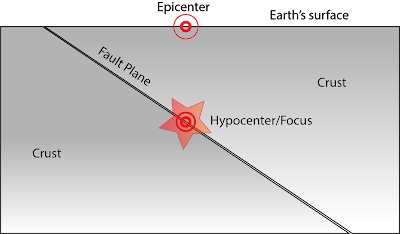
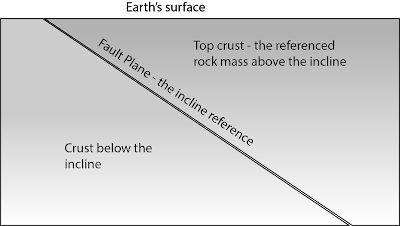
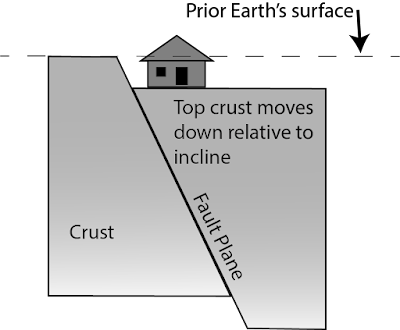
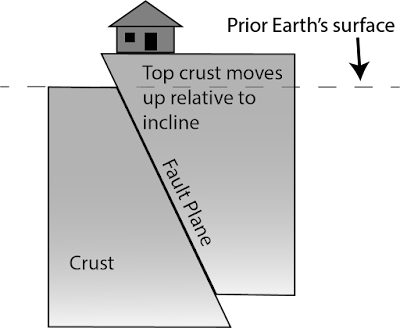




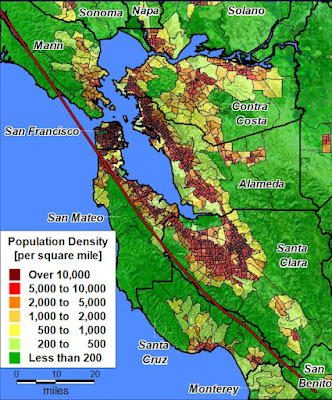
Comments
Post a Comment